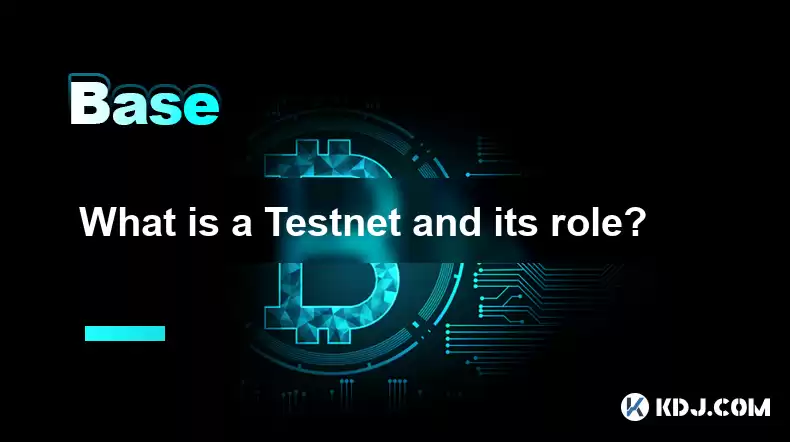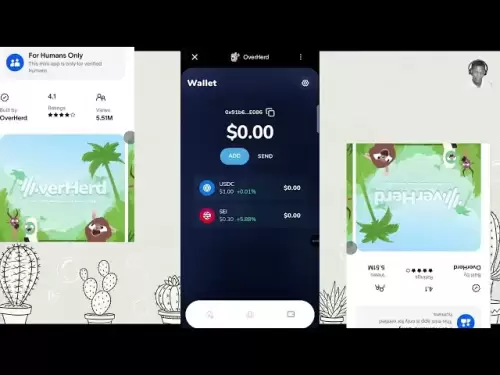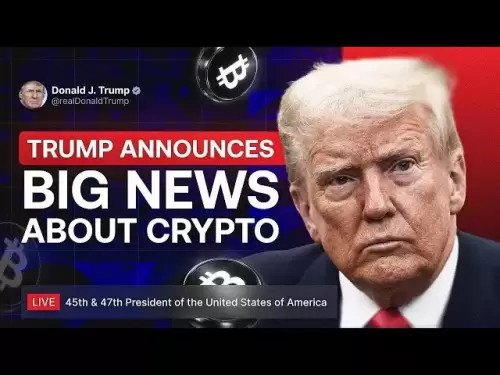-
 Bitcoin
Bitcoin $114200
0.00% -
 Ethereum
Ethereum $3637
0.56% -
 XRP
XRP $2.950
-2.01% -
 Tether USDt
Tether USDt $0.9999
0.02% -
 BNB
BNB $761.0
0.55% -
 Solana
Solana $164.1
-1.38% -
 USDC
USDC $0.9999
0.02% -
 TRON
TRON $0.3332
0.36% -
 Dogecoin
Dogecoin $0.2012
-0.52% -
 Cardano
Cardano $0.7261
-1.41% -
 Hyperliquid
Hyperliquid $37.62
-2.13% -
 Stellar
Stellar $0.3930
-2.65% -
 Sui
Sui $3.441
-0.16% -
 Bitcoin Cash
Bitcoin Cash $563.8
0.70% -
 Chainlink
Chainlink $16.50
0.09% -
 Hedera
Hedera $0.2424
-0.14% -
 Ethena USDe
Ethena USDe $1.001
0.01% -
 Avalanche
Avalanche $22.20
0.00% -
 Litecoin
Litecoin $118.0
-2.48% -
 UNUS SED LEO
UNUS SED LEO $8.991
0.12% -
 Toncoin
Toncoin $3.195
-3.87% -
 Shiba Inu
Shiba Inu $0.00001217
0.12% -
 Uniswap
Uniswap $9.674
-0.21% -
 Polkadot
Polkadot $3.633
1.00% -
 Monero
Monero $295.3
-0.82% -
 Dai
Dai $0.9999
0.00% -
 Bitget Token
Bitget Token $4.321
-0.41% -
 Cronos
Cronos $0.1392
0.73% -
 Pepe
Pepe $0.00001027
-0.89% -
 Aave
Aave $258.5
0.32%
What is a Testnet and its role?
A testnet is a vital testing ground for blockchain developers to experiment with new features and fix bugs without risking real funds, ensuring smooth mainnet deployment.
Apr 09, 2025 at 09:21 pm

A testnet is a crucial component of the cryptocurrency and blockchain ecosystem, serving as a testing environment for developers and users to experiment with new features, smart contracts, and applications without risking real funds. The primary role of a testnet is to provide a safe space where developers can identify and fix bugs, test the scalability and performance of their blockchain networks, and ensure that new updates or features work as intended before they are deployed on the mainnet, or the live network.
What is a Testnet?
A testnet is essentially a separate blockchain network that mirrors the mainnet but operates with test cryptocurrencies that have no real-world value. This allows developers to simulate real-world conditions and interactions without the financial risks associated with using actual cryptocurrencies. For example, Ethereum's testnet uses test ether (ETH), which can be obtained for free from faucets specifically designed for the testnet.
The Role of a Testnet in Blockchain Development
The role of a testnet in blockchain development is multifaceted. It serves as a sandbox environment where developers can:
- Test new features and updates: Before rolling out new functionalities on the mainnet, developers can test them on the testnet to ensure they work correctly and do not introduce vulnerabilities.
- Debug and fix issues: By running their code on the testnet, developers can identify and resolve bugs and security issues without affecting the mainnet.
- Assess network performance: Testnets allow developers to evaluate the scalability and performance of their blockchain under various conditions, helping them optimize the network before it goes live.
- Engage the community: Testnets provide an opportunity for the community to participate in testing and provide feedback, which can be invaluable for improving the final product.
How to Use a Testnet
Using a testnet involves several steps, which can vary slightly depending on the specific blockchain network. Here is a general guide on how to use a testnet:
- Choose a testnet: Different blockchains have their own testnets. For example, Ethereum has several testnets like Ropsten, Rinkeby, and Goerli. Choose the one that suits your needs.
- Set up a wallet: You will need a wallet compatible with the testnet you are using. For Ethereum testnets, you can use MetaMask or MyEtherWallet.
- Obtain test cryptocurrency: Use a testnet faucet to get free test cryptocurrency. For example, to get test ETH on the Ropsten testnet, you can visit the Ropsten Faucet and request test ETH.
- Interact with the testnet: Once you have test cryptocurrency, you can start interacting with the testnet by deploying smart contracts, sending transactions, and testing applications.
Benefits of Using a Testnet
The benefits of using a testnet are numerous and significant for both developers and users. Some of the key benefits include:
- Risk-free experimentation: Developers can experiment with new ideas and technologies without the fear of losing real funds.
- Improved security: By identifying and fixing vulnerabilities on the testnet, developers can enhance the security of the mainnet.
- Community engagement: Testnets allow the community to get involved in the development process, providing valuable feedback and helping to build a more robust network.
- Cost-effective development: Testing on a testnet is much more cost-effective than making changes directly on the mainnet, where transaction fees and other costs can be high.
Examples of Testnets in Action
Several prominent blockchain networks have utilized testnets to great effect. Here are a few examples:
- Ethereum: Ethereum's testnets, such as Ropsten and Rinkeby, have been instrumental in testing new features like EIP-1559, which introduced a new fee market mechanism. These testnets allowed developers to fine-tune the feature before it was implemented on the mainnet.
- Bitcoin: Bitcoin's testnet, known as Testnet3, has been used to test various improvements and upgrades to the Bitcoin protocol, including Segregated Witness (SegWit) and Taproot.
- Polkadot: Polkadot's testnet, Kusama, serves as a "canary network" where new features and upgrades are tested before being deployed on the main Polkadot network. Kusama has been crucial in testing the interoperability and scalability of the Polkadot ecosystem.
Challenges and Limitations of Testnets
While testnets offer many advantages, they also come with certain challenges and limitations. Some of these include:
- Different behavior from mainnet: Testnets may not perfectly replicate the conditions of the mainnet, leading to potential discrepancies in how features perform.
- Limited participation: Not all users and developers may have the resources or interest to participate in testnet activities, which can limit the scope of testing.
- Security concerns: Although testnets are meant to be secure, they can still be vulnerable to attacks, which can disrupt testing efforts.
- Resource intensive: Maintaining a testnet requires significant resources, including computational power and funding, which can be a challenge for smaller projects.
Frequently Asked Questions
Q: Can I earn real money on a testnet?
A: No, testnets use test cryptocurrencies that have no real-world value. The purpose of a testnet is to test and experiment without financial risk, so you cannot earn real money on a testnet.
Q: How long does a testnet typically last?
A: The duration of a testnet can vary widely depending on the project and its goals. Some testnets may run for a few weeks, while others can last for several months or even years.
Q: Are testnets only for developers?
A: While testnets are primarily used by developers, they are also open to users who want to test new features and applications. Community participation is encouraged and can provide valuable feedback to developers.
Q: Can I use the same wallet for both testnet and mainnet?
A: It depends on the wallet and the blockchain network. Some wallets, like MetaMask, allow you to switch between testnet and mainnet environments, while others may require separate wallets for each. Always check the specific requirements of the wallet and network you are using.
Disclaimer:info@kdj.com
The information provided is not trading advice. kdj.com does not assume any responsibility for any investments made based on the information provided in this article. Cryptocurrencies are highly volatile and it is highly recommended that you invest with caution after thorough research!
If you believe that the content used on this website infringes your copyright, please contact us immediately (info@kdj.com) and we will delete it promptly.
- Binance, CZ, and the FTX Fallout: The $1.8 Billion Question
- 2025-08-06 18:30:12
- Brendan Rodgers, Celtic, and the Greg Taylor Role: A Tactical Conundrum
- 2025-08-06 18:50:12
- Coinbase Stock, Investment, and Earnings: Navigating Crypto's Tides
- 2025-08-06 18:55:54
- DALPY Coin: Investor Buzz Swirls Around Upcoming 'Game-Changing' Features
- 2025-08-06 18:30:12
- Fast-Moving Cryptos: Could Pudgy Penguins Deliver High Gains by 2025?
- 2025-08-06 16:30:11
- Crypto Gaming Tokens: August 2025 Investment Opportunities
- 2025-08-06 16:50:12
Related knowledge

What is the difference between CeFi and DeFi?
Jul 22,2025 at 12:28am
Understanding CeFi and DeFiIn the world of cryptocurrency, CeFi (Centralized Finance) and DeFi (Decentralized Finance) represent two distinct financia...

How to qualify for potential crypto airdrops?
Jul 23,2025 at 06:49am
Understanding What Crypto Airdrops AreCrypto airdrops refer to the distribution of free tokens or coins to a large number of wallet addresses, often u...

What is a crypto "airdrop farmer"?
Jul 24,2025 at 10:22pm
Understanding the Role of a Crypto 'Airdrop Farmer'A crypto 'airdrop farmer' refers to an individual who actively participates in cryptocurrency airdr...

What is the difference between a sidechain and a Layer 2?
Jul 20,2025 at 11:35pm
Understanding the Concept of SidechainsA sidechain is a separate blockchain that runs parallel to the main blockchain, typically the mainnet of a cryp...

What is the Inter-Blockchain Communication Protocol (IBC)?
Jul 19,2025 at 10:43am
Understanding the Inter-Blockchain Communication Protocol (IBC)The Inter-Blockchain Communication Protocol (IBC) is a cross-chain communication protoc...

How does sharding improve scalability?
Jul 20,2025 at 01:21am
Understanding Sharding in BlockchainSharding is a database partitioning technique that is increasingly being adopted in blockchain technology to enhan...

What is the difference between CeFi and DeFi?
Jul 22,2025 at 12:28am
Understanding CeFi and DeFiIn the world of cryptocurrency, CeFi (Centralized Finance) and DeFi (Decentralized Finance) represent two distinct financia...

How to qualify for potential crypto airdrops?
Jul 23,2025 at 06:49am
Understanding What Crypto Airdrops AreCrypto airdrops refer to the distribution of free tokens or coins to a large number of wallet addresses, often u...

What is a crypto "airdrop farmer"?
Jul 24,2025 at 10:22pm
Understanding the Role of a Crypto 'Airdrop Farmer'A crypto 'airdrop farmer' refers to an individual who actively participates in cryptocurrency airdr...

What is the difference between a sidechain and a Layer 2?
Jul 20,2025 at 11:35pm
Understanding the Concept of SidechainsA sidechain is a separate blockchain that runs parallel to the main blockchain, typically the mainnet of a cryp...

What is the Inter-Blockchain Communication Protocol (IBC)?
Jul 19,2025 at 10:43am
Understanding the Inter-Blockchain Communication Protocol (IBC)The Inter-Blockchain Communication Protocol (IBC) is a cross-chain communication protoc...

How does sharding improve scalability?
Jul 20,2025 at 01:21am
Understanding Sharding in BlockchainSharding is a database partitioning technique that is increasingly being adopted in blockchain technology to enhan...
See all articles

























































































